Description of work
The aim of this WP is to select and modify formwork materials that can be processed using automated or semi-automated systems and robot technology and associated load-bearing structures that fulfill requirements of flexibility, sustainability, robustness, reusability and cost effectiveness, i.e. formwork that provide new design possibilities. In order to obtain the desired surface texture of the concrete and the possibility of reusing the formwork, suitable release agents and coatings will be selected and modified specifically for each type of formwork material.
RESEARCH
Developing a new formwork type; the Multi-edge Formwork
Special cut plywood sheets placed on top of a flexible formwork system consisting of beams and adjustable telescopic girders. By using a standard shoring system and new developed standard telescopic girders, it is possible to make double curved slaps. The plywood plates are special cut by a robot/cnc-machine.
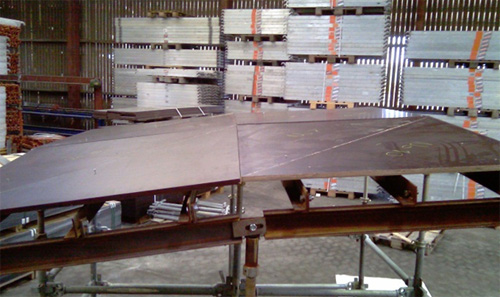
A mock-up of the Multi-edge Formwork
The support structure is a standard shoring system with a column (support) placed in a grid of 1,2 m x 1,2 m. In the TailorCrete project a support system called Kwickstage Shoring from the manufacture RMD Kwikformis used. A support system with a support grid of 1,2 m x 1,2 m and with a spigot jack (top spindle) with a range of 500 mm, is usable.
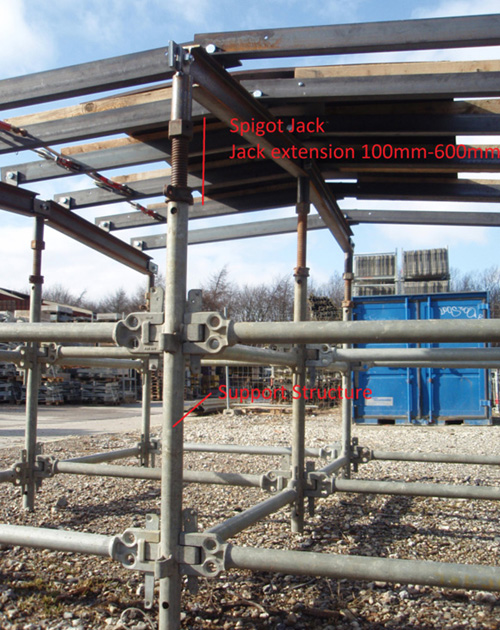
Support structure for the Multi-edge Formwork
The load distribution layer consists of 3 parts; head, primary beam and secondary beam:
- The head is special made for the Kwickstage Shoring System. The top of the head have to fit to the beams see below, and the bottom of the head should fit to the support system
- The primary beam is an IPE 100, with oblong holes at the end. The length has a range of 1200 mm to 1255 mm to manage slopes up to 17 degrees
- The secondary beam is an angelbar 75x50x7 mm with a wood lath on top to fix the plywood plate. The length is 1200mm-1255 mm to manage slopes up to 17 degrees. All the beams are connected to each other with M16 bolts.
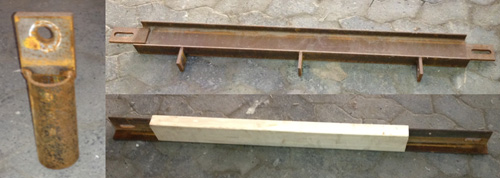
The 3 parts of the load distribution layer: head (left), primary beam (top-right), and secondary beam (buttom-right)
The skin consists of 15-21 mm plywood plates, depending of the thickness of the concrete. The plate has to be custom cut, therefore it can only be used once. It is important to use a plate thin as possible to reduce the price as much as possible. The plywood has to be special cut by a robot or a cnc-machine. In order to make a double curved surface, the plywood plates are bended and fixed into position.
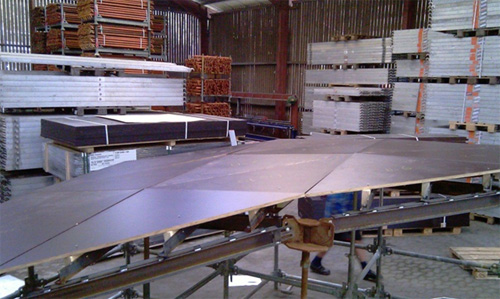
The system can be used both with square plates and triangular plates as the skin layer
Developing a new formwork type; the Wax Formwork
This project part develops a completely waste-free fabrication method of formwork for free-form, cast-on-site, non-repetitive concrete structures. The characteristics of concrete, to be cast into any shape, make it an ideal material for complex, double-curved large scale projects. However, the state of the art in free-form formwork fabrication for on-site use still requires labor intensive or wasteful processes. The method presented here, consists of wax formwork elements, poured on a flexible actuated mold that after curing can be assembled on-site, on standard scaffolding, ready for concrete casting. After striking the formwork, the wax elements can be fully re-used by re-melting and molding them into new shapes.
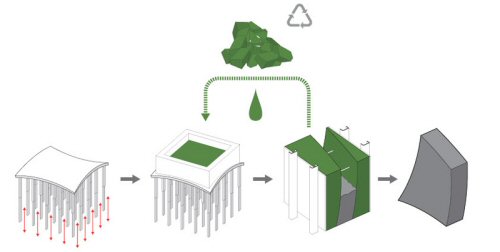
Waste less Fabrication of Formwork for Free-form Cast-on-site Concrete
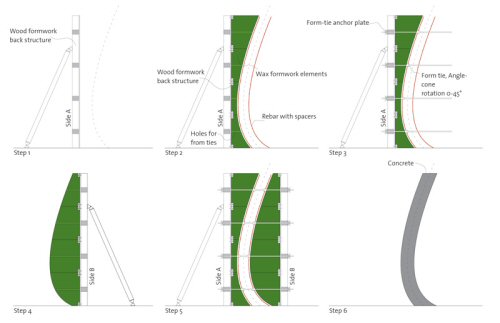
On Site Assembly: Compatible with Conventional Methods
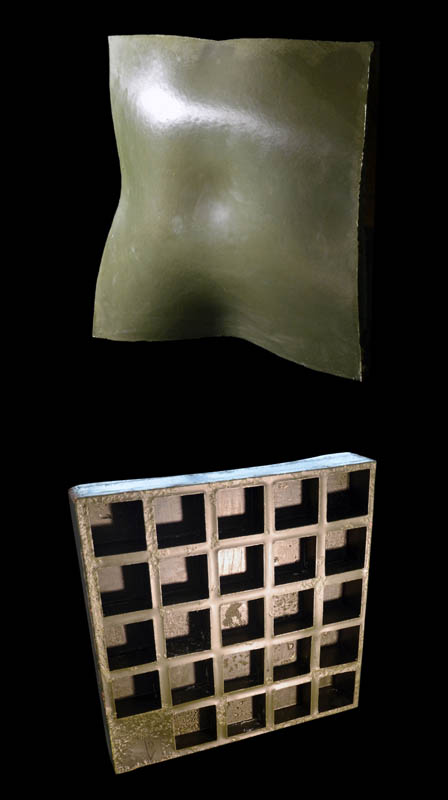
Front and back of wax element
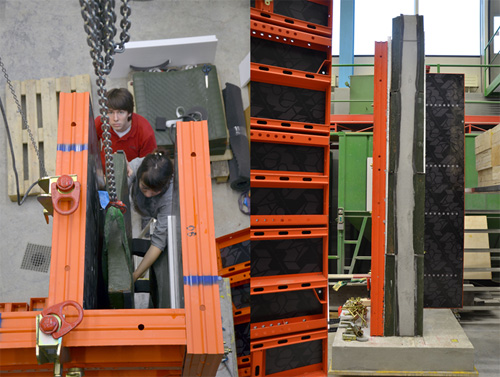
Prototype: 3m Column, Testing Concrete Pressure, Formwork Performance and Assembly
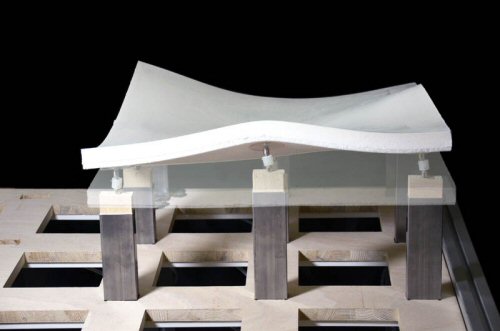
Adjustable mold actuation
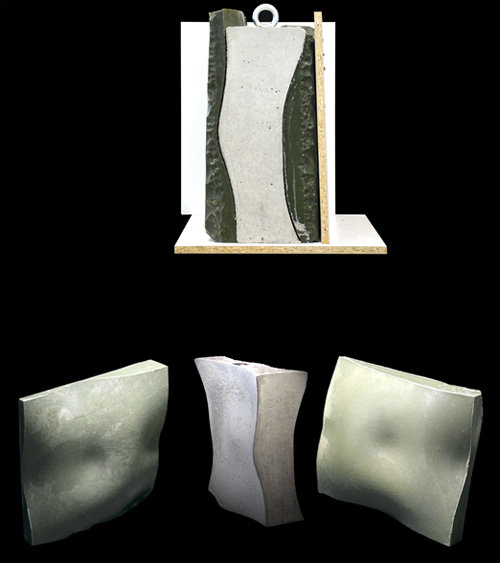
Full Process Prototype. Two-sided Free-form (Double Curved) Concrete Cast With Corresponding Wax Formwork
Developing a new formwork type; Milled Formwork
The formwork system consists of both standard parts and milled out shape-giving formwork parts. The formwork material for the formwork parts are milled out in light-weight materials and hereafter coated with a flexible and reusable rubber skin. The coating makes it possible to reuse the milled formwork parts or recycle without waste.
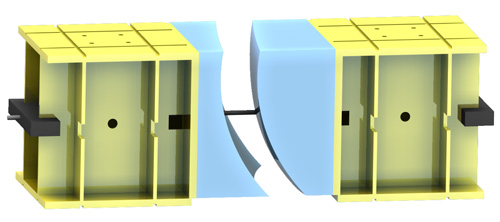
Illustration of the Milled Formwork consisting of standard plates as support system and milled blocks to define the final shape
The load distribution layer is a stacking system developed in TailorCrete. Its purpose is both to break non-standardized geometries into horizontal and vertical grids and to save significant material for the shape defining structure. The system consists of plywood sheets as smallest units. When assembling the sheets the same modular system appears. When the cross sheets are placed in the traces of the horizontal sheets they provide stability to the system in all directions. The holes in the cross sheets are used for the tie rods. The holes in the horizontal sheets are used for vertical tie rods if necessary. The open structure is covered with the front sheets where milled formwork parts are to be placed.
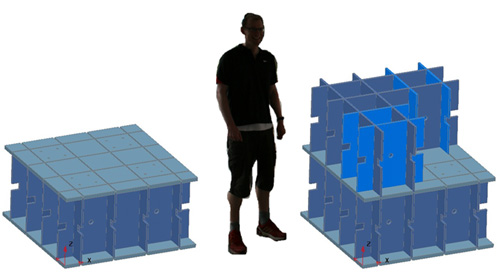
Assembling of the different sized plywood sheets
For the development expanded polystyrene (EPS) is used as the shape defining structure. In order to reduce the milling time optimized 5-axis milling strategies has been developed.
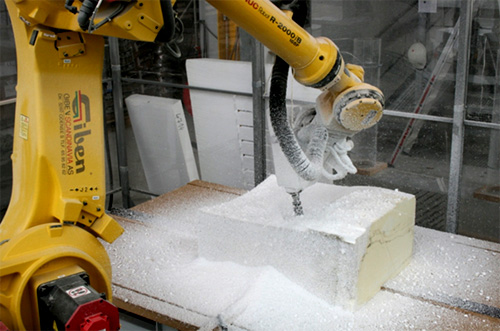
5-axix milling at the robot cell at Danish Technological Institute
In order to achieve smooth surfaces, better release between the concrete and the formwork material, and to ensure that the formwork material can be reused, a thin rubber membrane is fixed to the milled blocks. Thus the rubber membrane works as a coating.
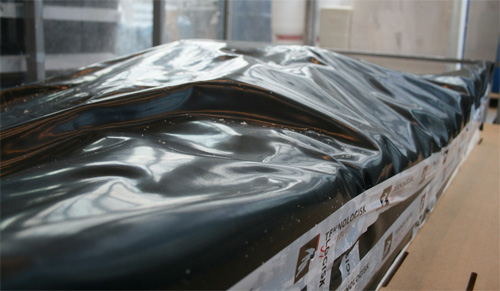
Thin rubber membrane attached to the milled blocks
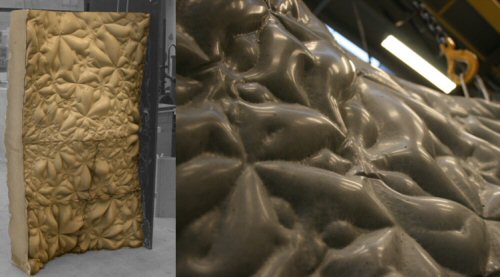
Prototype cast using the Milled Formwork showing the possibilities for smooth surfaces and advanced reliefs
Assessment of the developed formwork systems
Non-standardized building objects often contain different ranges of curvature. A curvature is defined by its bending radius using meters as the unit. In order to define different ranges of curvature TC has defined 4 categories of curvature ranges:
- Low curvature: >15m
- Medium curvature: 5m – 15m
- High curvature: 1,5m – 5m
- Very high curvature & detailing: 0,05m – 1,5m
When the curvature becomes below 0,05m it is defined as a texture, and other types of surfaces, e.g. surfaces composed of several surfaces with sharp edged, it is defined as detail.
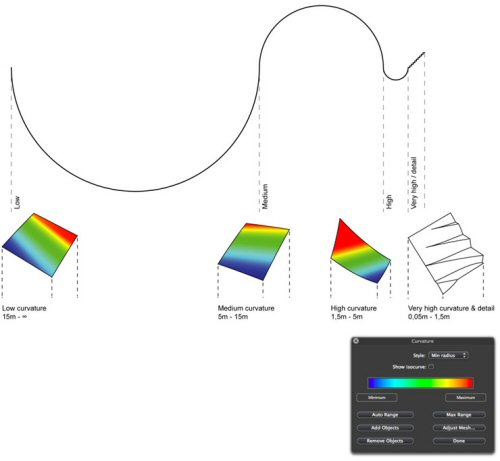
Different curvature ranges
Continuous assessment of the developed formwork systems has been conducted divided into the different categories of curvature. The results from the assessment have been used to identify possible weaknesses and special challenges of each formwork system that needed to be addressed.
The assessment concludes that
- All three developed systems are more cost-effective than the reference system used for the comparison. The Multi-edge Formwork is most cost-effective in connection to structures with low- and medium curvature
- The Wax Formwork used less energy than the two other systems in connection to structures with low- and high curvatures
- All three systems provides good surface quality of the concrete and the edges and joints give good results. The Milled Formwork provides most possibilities in terms of architectural usability, thus it can be used in connection to structures with low-, medium- and high curvatures and surface detailing.
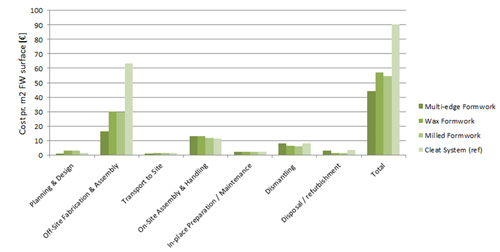
Cost comparison of the 3 developed formwork systems and a reference system regarding Medium curvature structures
WP-leader: Danish Technological Institute
